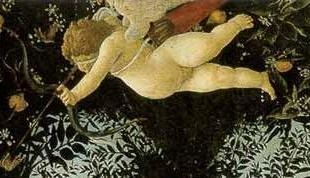The Kuriki method (the first edition in 2007) is a theory about Tourette’s syndrome (tic disorder) and obsessive-compulsive disorder to cure these diseases without medication. This theory is based on the author’s inference and interpretation regarding the structure of these diseases. Since it has been written for the psychoanalysts, reading will be difficult for people in general and it might be sometimes read erroneously. Therefore the Kuriki method must presuppose that the patient is treated by a nearby psychoanalyst, and that, between the patient and the Kuriki method, there is always the psychoanalyst. The explosion of emotional catharsis, which has strong repercussions, is done only for three seconds, once a week: beyond this rhythm, it would be an accident caused by negligence, and the psychoanalyst who is inexperienced in emotional catharsis must take responsibility for the temporary mental collapse caused by the accident. Also, to the patient who has weak capacity of logical reasoning, the psychoanalyst must explain well on the violent emotion of revenge caused by the illusory confusion between the person of the traumatic image in his head and the person in the real world.
Cure for Tourette’s syndrome (tic disorder) and OCD without medication
§23

In the Kuriki method, repression, Libido and Superego have been defined much differently than in the descriptions by Freud. Definitions are issues of words and rather poetical issues. The personal understanding of each patient is a therapeutic means for this patient. As mentioned earlier, the term “Ego” is not used in the Kuriki method, because a lot of people do not know that the Freudian Ego is largely in the Unconscious. Also as tic can begin at the age of 2 years, the Freudian Super-ego, which develops from the age of 5 years, is not the issue. It would be an error to include the Freudian Super-ego in the cases of tic disorder. The Kuriki method is so different from Freud’s psychoanalysis that even the Freudian Super-ego is not an element of the causes of tic disorder. In Freud’s psychoanalysis, neurosis is a disease of the Ego, which is between the Superego and the Id. In Kuriki method, tic disorder is a means of repression by the Unconscious. Just as the corporeality of the Id, the corporeality of the Super-ego and the corporeality of the Ego are at center of the understanding of neurosis in Freud’s psychoanalysis, it is the corporeality of the function of repression, that is at the center of the understanding of this treatment of tic disorder.
The onset of obsessive-compulsive disorder is much later than tic disorder; at the age of 7 years at earliest and usually after the age of 10 years. The definition of the Super-ego of the patients older than 5 years is necessary for the interpretation of KV. The Super-ego is not the cause of KV, but an element of the function of rationalization.
The rationalization for a tic movement is always irrational, and especially the rationalization of small children under 5 years is particularly irrational. Irrational; it means the reason has no reason.
· Repression
Restriction of objects of the Conscious by the Unconscious, including bodily sensations. Repression is not a state of repression, but the function of repression that tries to repress. For example, the function of repression attempts to repress the sensation of fatigue of the legs, despite the fact that the sensation of fatigue of the legs will not disappear.
· Libido
Energy in the intersection of the psychic domain and the bodily domain. This term represents the body in the mind, and the mind in the body. The corporeality of the Absolute-Compulsion is due to the direct relationship between the body and the Unconscious.
· Super-ego
Censorship on the Libido at the border of the Conscious and the Unconscious. Only sexual desire can pass.
The Super-ego is mentioned always in relation with the Libido, because psychoanalysis is a way of treatment for neurosis. Without saying anything of bodily symptoms of neurosis, descriptions of the Super-ego would have no meaning. It would be useless to speak of the Super-ego as a component of a healthy mind, which has no bodily symptoms.
Sexual desire is a manifestation of the Libido that entered the Conscious. As sexual desire is an object of the Conscious, it can no longer be repressed. Sexual desire is a bodily function, and if the Super-ego repressed sexual desire, it would be the extinction of humanity. The Super-ego does not allow the Libido to pass except for being as sexual desire.
Against the Libido, the gate of the censorship of the Super-ego is transversal. Small children and small animals can easily pass, but adults can go through only as crouching. So that manifestations of the Libido passe the Super-ego, adults need to become a small child of under 5 years, or a baby. God of love, Cupid has the form of a very small child, so that he passes the censorship of the Super-ego. In sexual acts of adult persons, there are many infantile elements. Often, a young couple goes to Disneyland. There is infantilization in irrational acts of obsessive-compulsive disorder, such as aligning things, counting, etc., and in words of coprolalia. Like eye-rolling tic, the intentionality of the Conscious toward the voluntary muscles, in the same way as the period of muscle development at the age of 0, is infantile.

